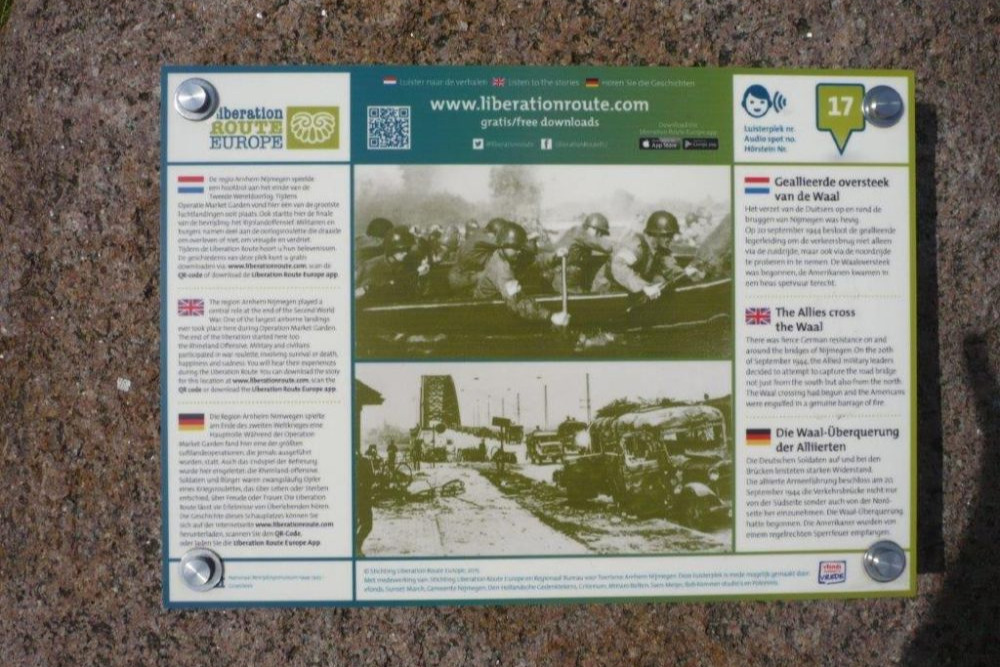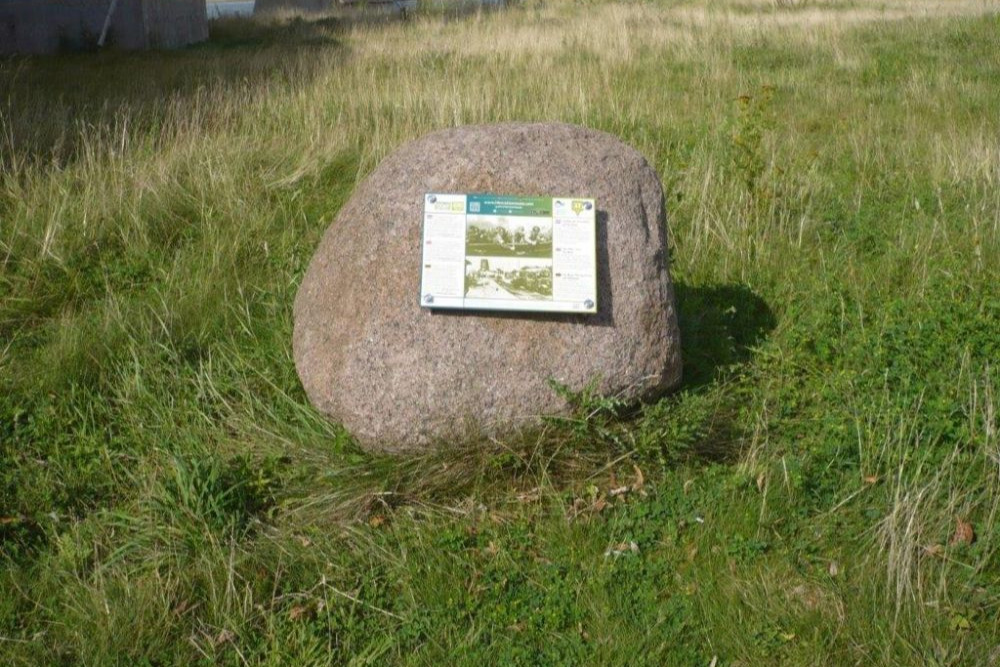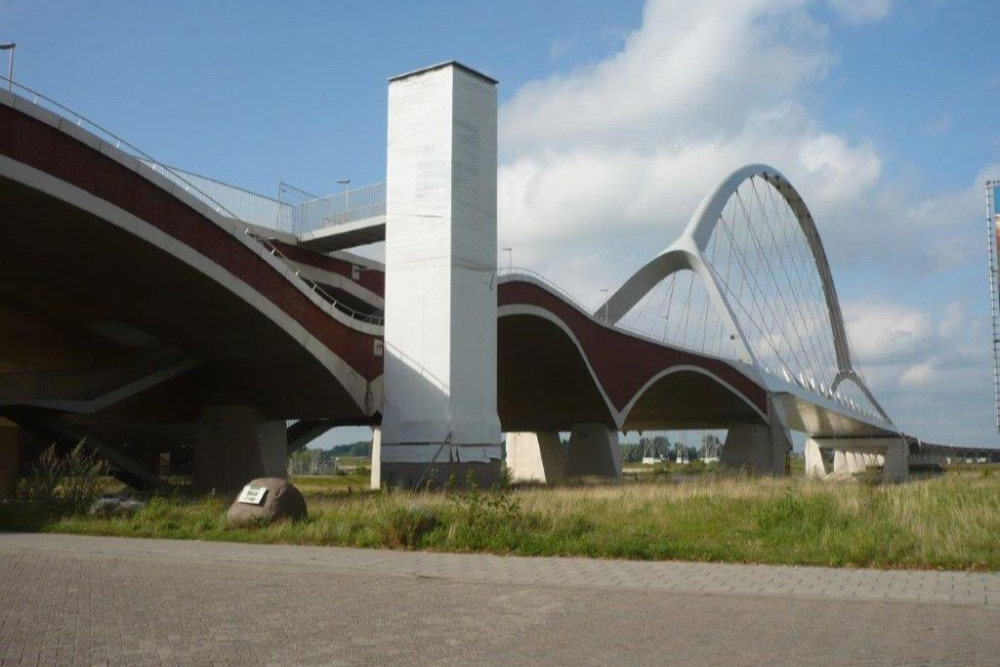Liberation Route Marker 017
Liberation Route Europe is a certified Cultural Route of the Council of Europe. With hundreds of sites and stories in nine European countries, the route links the main regions along the advance of the Allied Forces in 1943-1945.
The entire route consists of themed routes that can be travelled by by hiking, walking, cycling and car. These routes pass numerous historical and interesting sites and tell stories from a multitude of perspectives that were important in the final phase of World War II.
Many routes feature listening spots, offering the opportunity to listen to a historical story at a location. In addition, many ‘Vectors of Memory’ have been placed, indicating that the passer-by is on one of the Liberation Routes.
The routes can be found on the Liberation Route Europe website or in the app through which many stories can also be listened to.
The Allies cross the Waal
There was fierce German resistance on and around the bridges of Nijmegen. On the 20th of September 1944, the Allied military leaders decided to attempt to capture the road bridge not just from the south but also from the north. The Waal crossing had begun and the Americans were engulfed in a genuine barrage of fire.
On September 19, 1944, the Americans planned to advance to capture both bridges at Nijmegen. The 2nd Battalion of the 505th Regiment and the Grenadier Guards had to take both the railroad bridge and the road bridge as well as the post office. The post office probably contained the detonator with which the Germans intended to blow up the Waal Bridge. Except for the capture of the post office, however, the operation was difficult.
The general of the Waffen-SS, Wilhelm Bittrich, had sections of the 10. SS Panzer Division to Nijmegen to defend the Waal bridges. The Americans tried to take the bridges at Nijmegen and positioned themselves on the Nijmegen side of the Waal. They were stuck; the bridges had to be taken from the other side. If that failed, the Allied soldiers at Arnhem were lost.
On Sept. 20, the 3rd Battalion of the 504th Parachute Infantry Regiment was ordered by Major Julian Cook to cross the Waal and capture the bridge via the north side. With far too light boats from the British XXX Corps, they crossed the Waal. It became a battle of man against man. Of the 26 boats that left from the south bank, only 13 arrived on the other side, according to eyewitnesses. The rest had sunk during the crossing or the engineers on board had been killed.
The soldiers who managed to reach the other side of the Waal bank fought their way to the road bridge with bayonets drawn. Two hours after their crossing, the paratroopers had the railroad bridge in their hands and the Germans suffered heavy losses. Another two hours later, they had taken the north side of the traffic bridge. Then the first tanks of the Grenadier Guards rolled across the bridge.
Audiospot - The Allies cross the Waal
Do you have more information about this location? Inform us!
Source
- Text: TracesOfWar & Liberationroute.com
- Photos: Arie van Wijngaarden
Related books
Nearby
Museum
Point of interest
- Remains Church Building of the Carmelite Monastery Nijmegen - Nijmegen
- Fire Border 024 Nijmegen - Nijmegen
- White Stripe Nijmegen - Nijmegen
Monument
- Memorial Waal River Crossing - Lent (Nijmegen Noord)
- Memorial V1 Bomb - Nijmegen
- Memorial Waalcrossing at Nijmegen - Nijmegen
Cemetery
- Dutch War Grave Nijmegen - Nijmegen
- Commonwealth War Cemetery Jonkerbos - Nijmegen
- Commonwealth War Graves Rustoord Cemetery Nijmegen - Nijmegen
Remembrance Stone
- Remembrance Stone Jan van Hoof - Nijmegen
- Stumbling Stones Begijnenstraat 11 - Nijmegen
- Stumbling Stones Stikke Hezelstraat 54 (formerly 46) - Nijmegen































